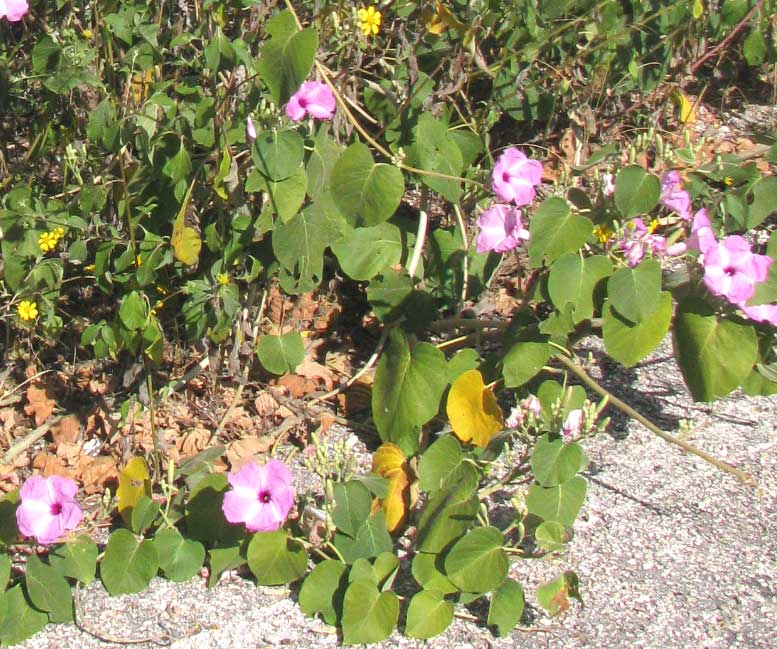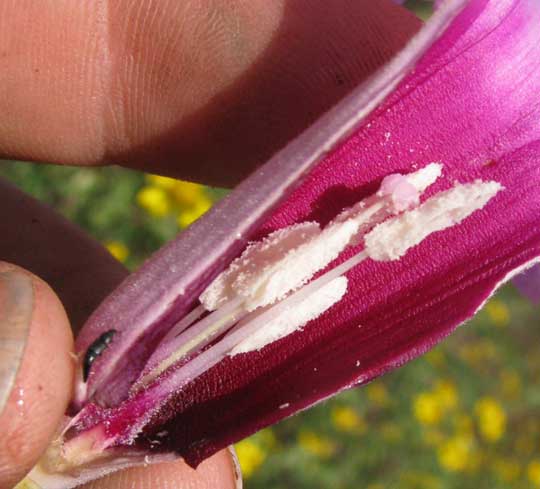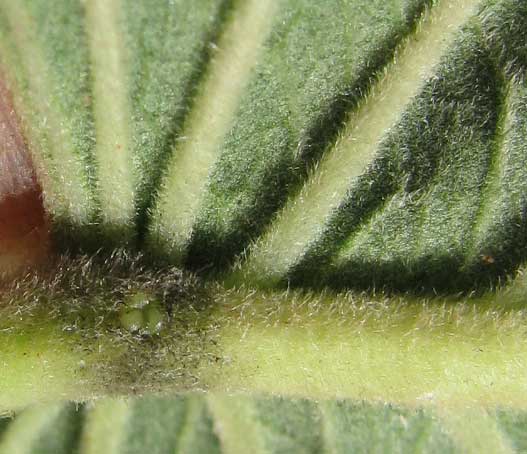Excerpts from Jim Conrad's
Naturalist Newsletter

from the January 16, 2011 Newsletter issued from Hacienda Chichen Resort beside Chichén Itzá Ruins, central Yucatán, MÉXICO; limestone bedrock, elevation ~39m (~128ft), ~N20.676°, ~W88.569°
IPOMOEA CARNEA ssp. CARNEA
With the dry season bearing down so, many herbs have died back and many trees have lost their leaves or are in the process of losing them. Even the weedy morning- glories that a month ago put on such a show are withdrawing, the landscape appearing ever browner and "wintry," despite the hot afternoons.
However, among the morning-glories, there's a handsome exception. Here and there along weedy roadsides a pink-flowered morning-glory with long, trailing, tough stems bearing leathery, semi-succulent, three-inch-broad (8cm), heart-shaped leaves twines among weeds and cascades onto the pavement. It's shown above.
This is a lot like the Goat's-foot Morning-Glory we saw scrambling across white, searing-hot beach-sand on the coast near Mahahual back in 2008. That species is at www.backyardnature.net/yucatan/goatfoot.htm.
However, notice that the Goat's-foot's leaves are notched at their tips, giving the leaf a goat's-foot shape, while leaves on our current species are pointed. Below, you a longitudinal section through a flower showing stamens of very different lengths:

As seen below, the hairy calyx's rounded sepals are of uneven lengths, and with what appears to be conspicuous glands at the sepals' bases:

The glandular midrib on the leaf's velvety underside is below:

*UPDATE: In 2011, relatively few resources were available on the Internet for identification, and the best I could determine at that time was that our vine might be Ipomoea asarifolia, based on a few Internet pictures. However, in 2024, much more is available on the Internet. When I uploaded the above images to the iNaturalist website, user "alexiz," who specializes in Mexican members of the Morning-glory Family, recognized IPOMOEA CARNEA ssp. CARNEA, whose identified pictures match ours, and now I'm going with that name.
Ipomoea carnea ssp. carnea is distributed from southern Mexico south to northwestern South America. This taxon is one of four Ipomoea carnea subspecies. Ipomoea carnea as a species occurs generally throughout the world's tropics and subtropics.
In English, Ipomoea carnea often is known as the Pink Morning Glory, though that name can be applied to many species. Sometimes it's called the Bush Morning Glory, though often its stems trail more than rise erect. There's just no decent English name for this species.
As with many morning glory species, the seeds of Ipomoea carnea are toxic and can be hazardous to grazing livestock. Over the world, the species is used in many way, from making paper of the stems, to various medicinal uses.